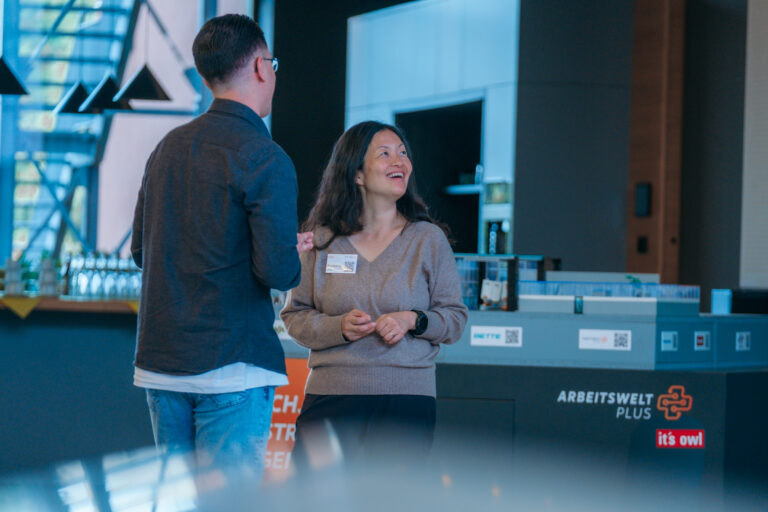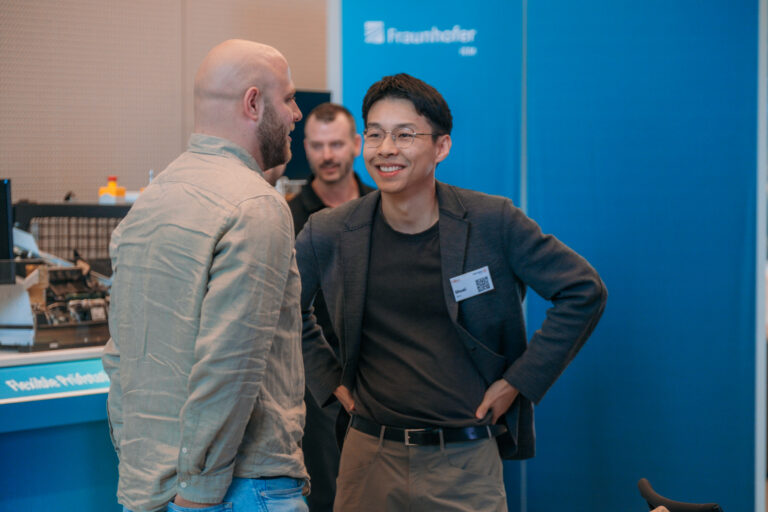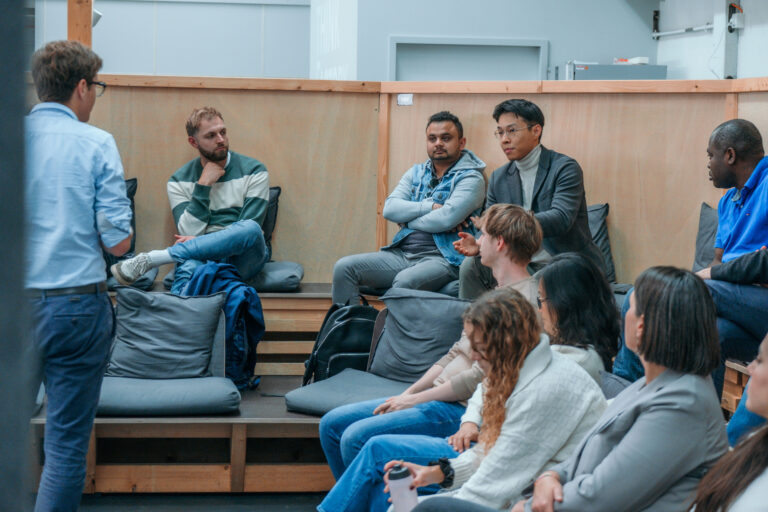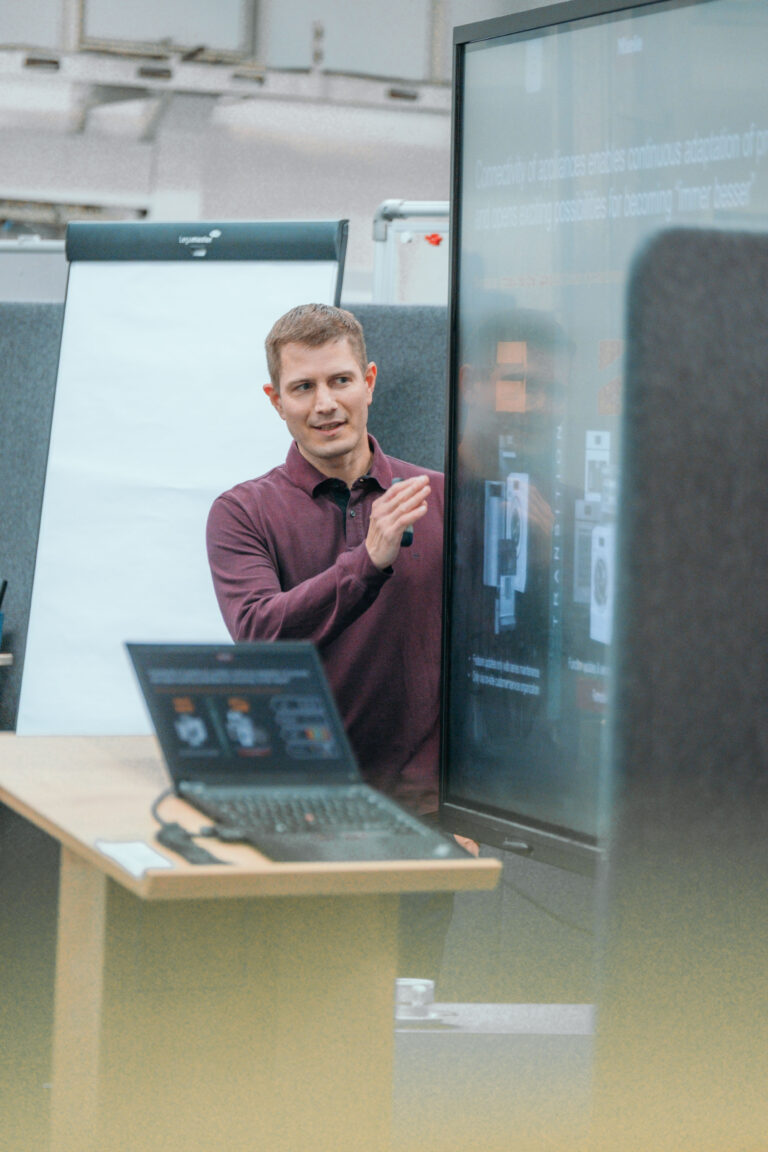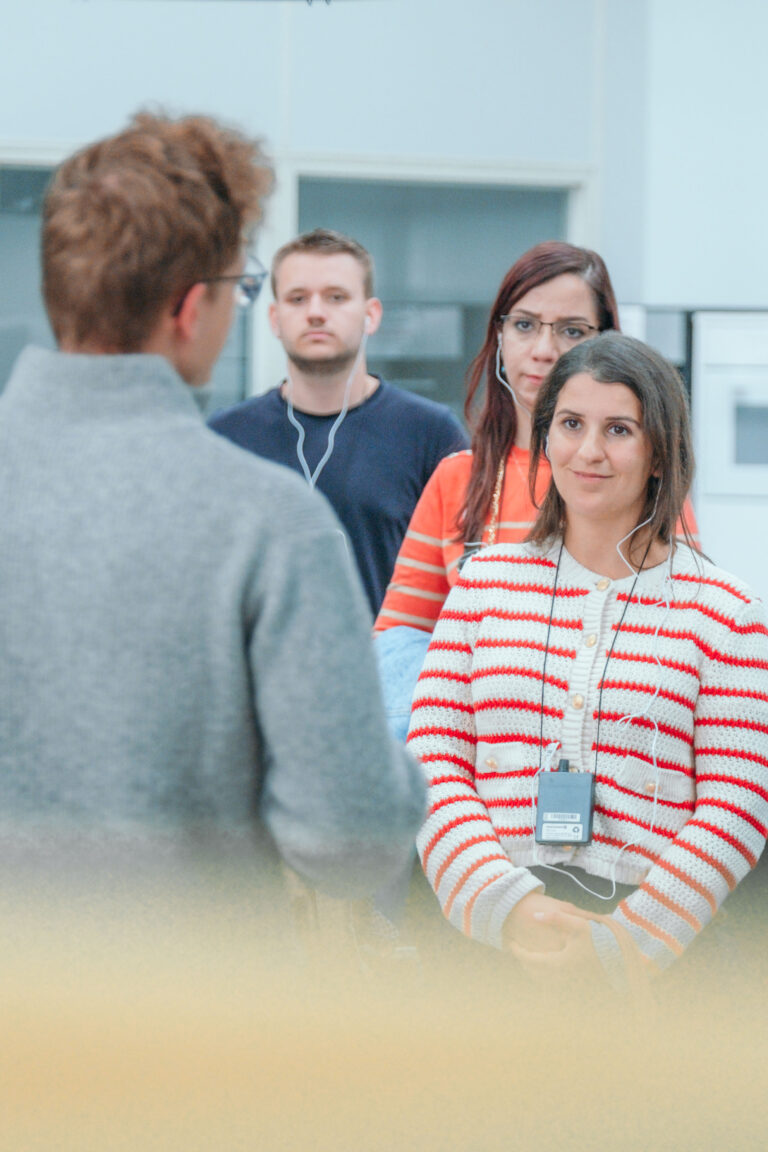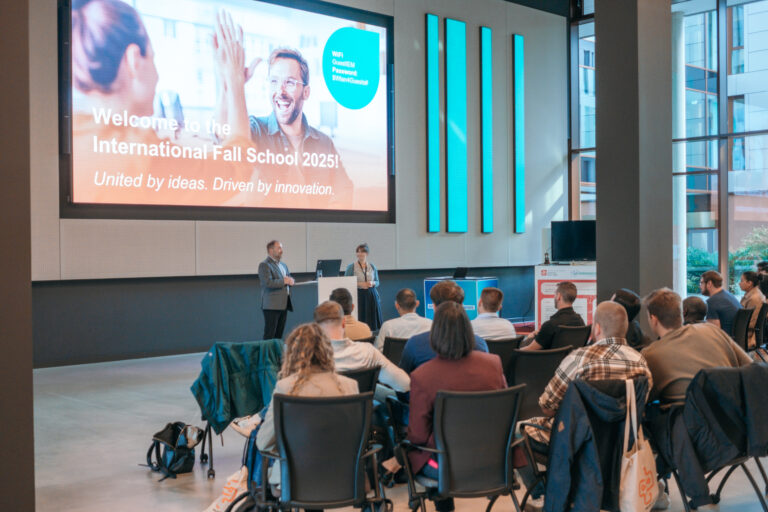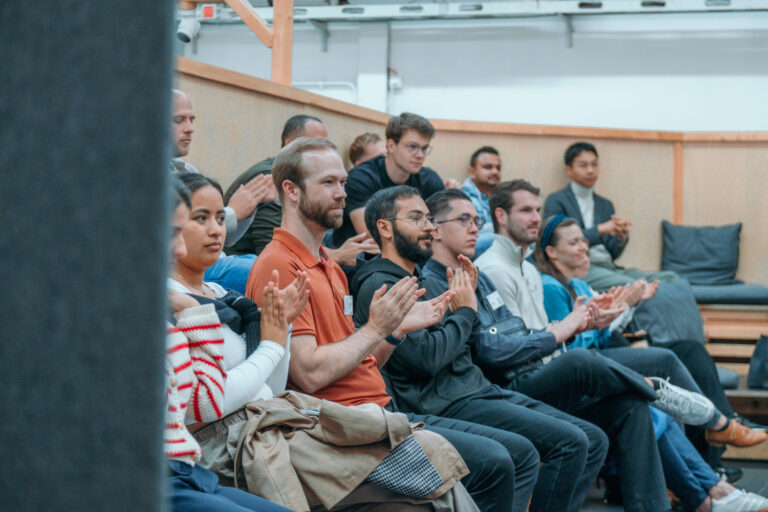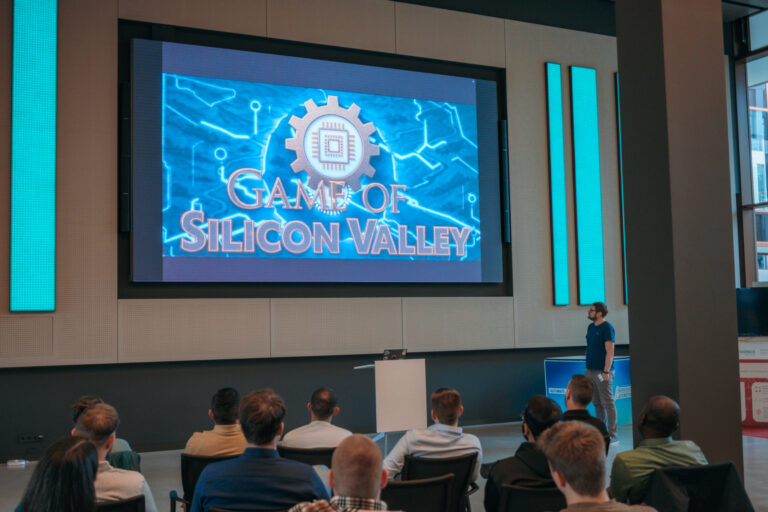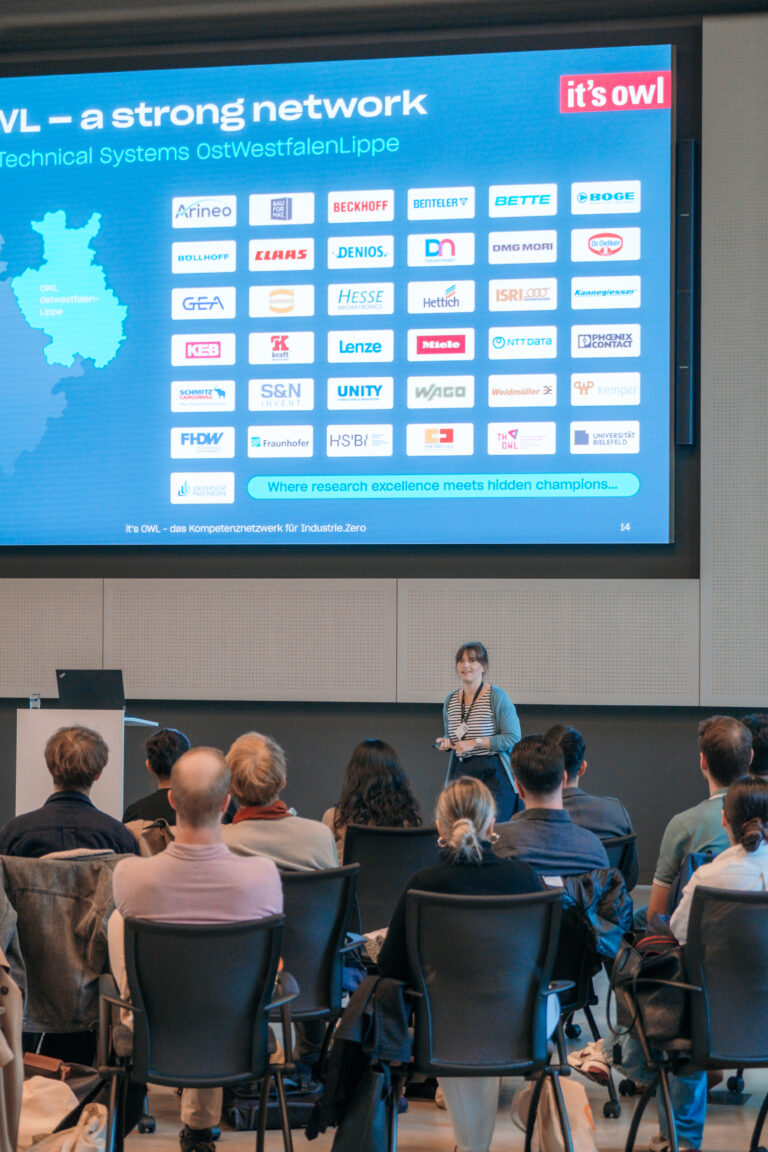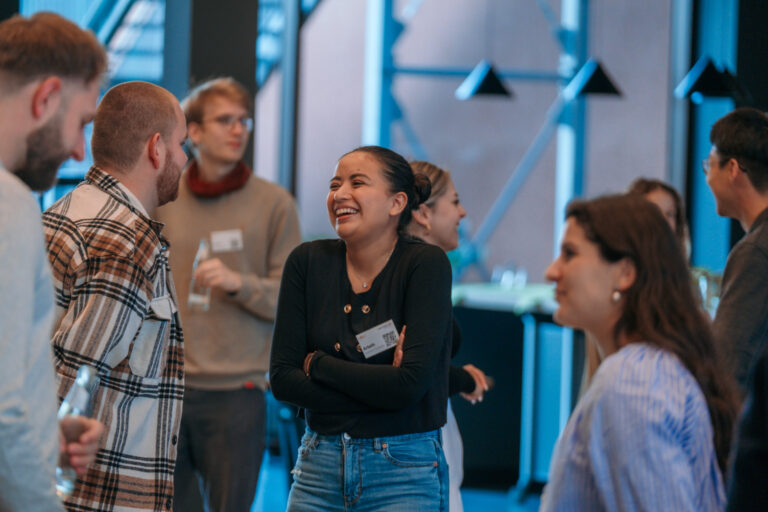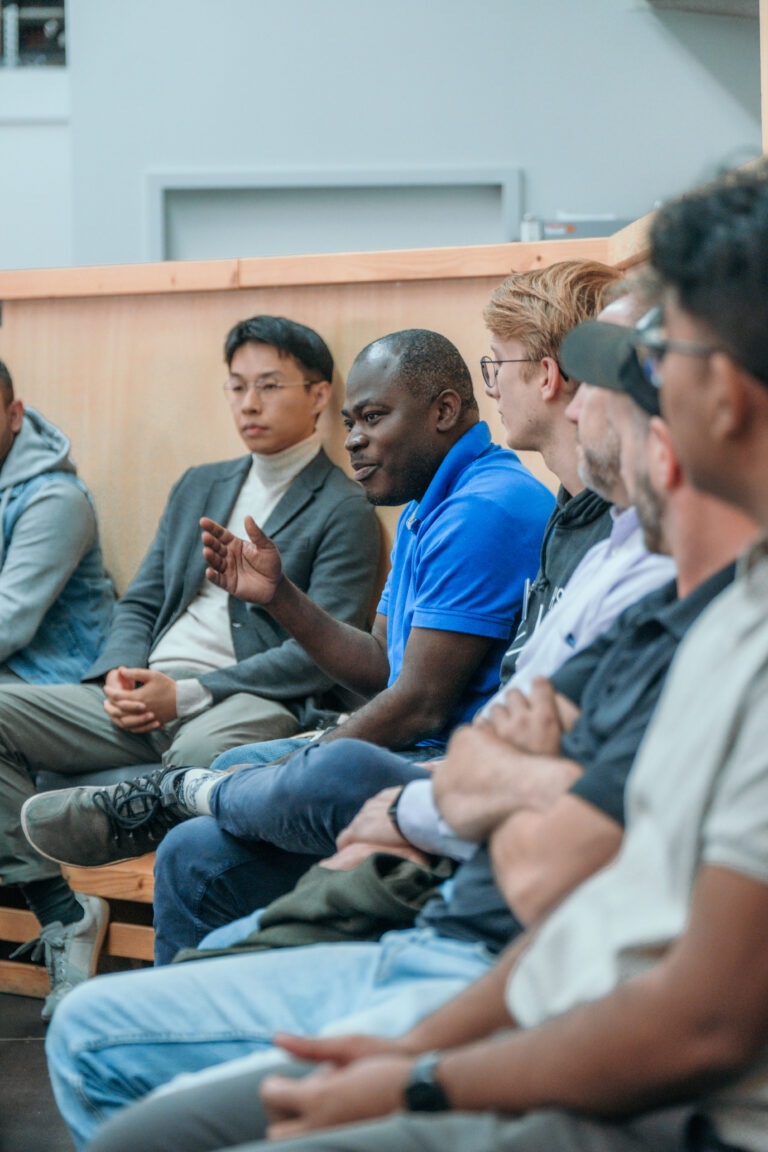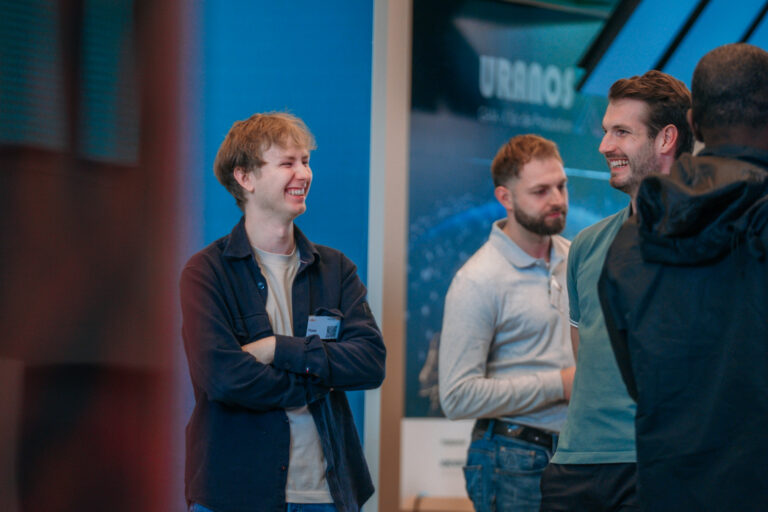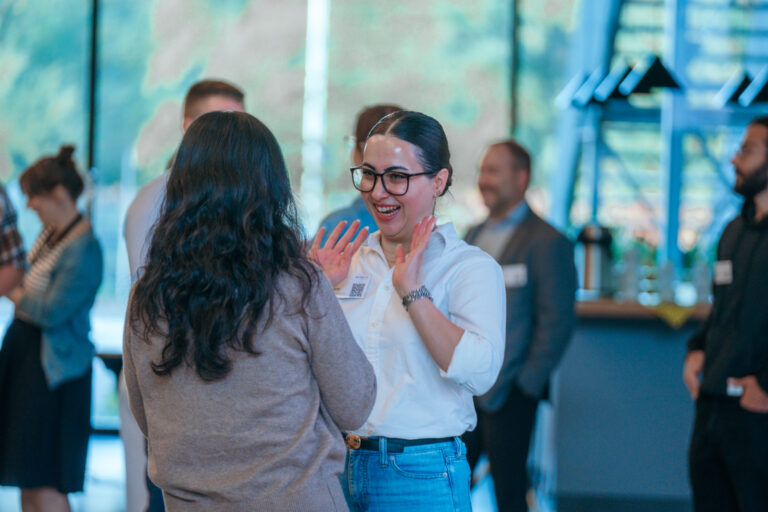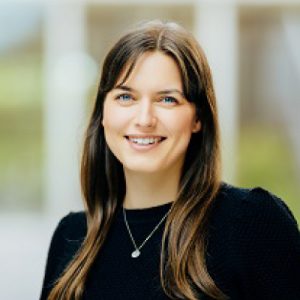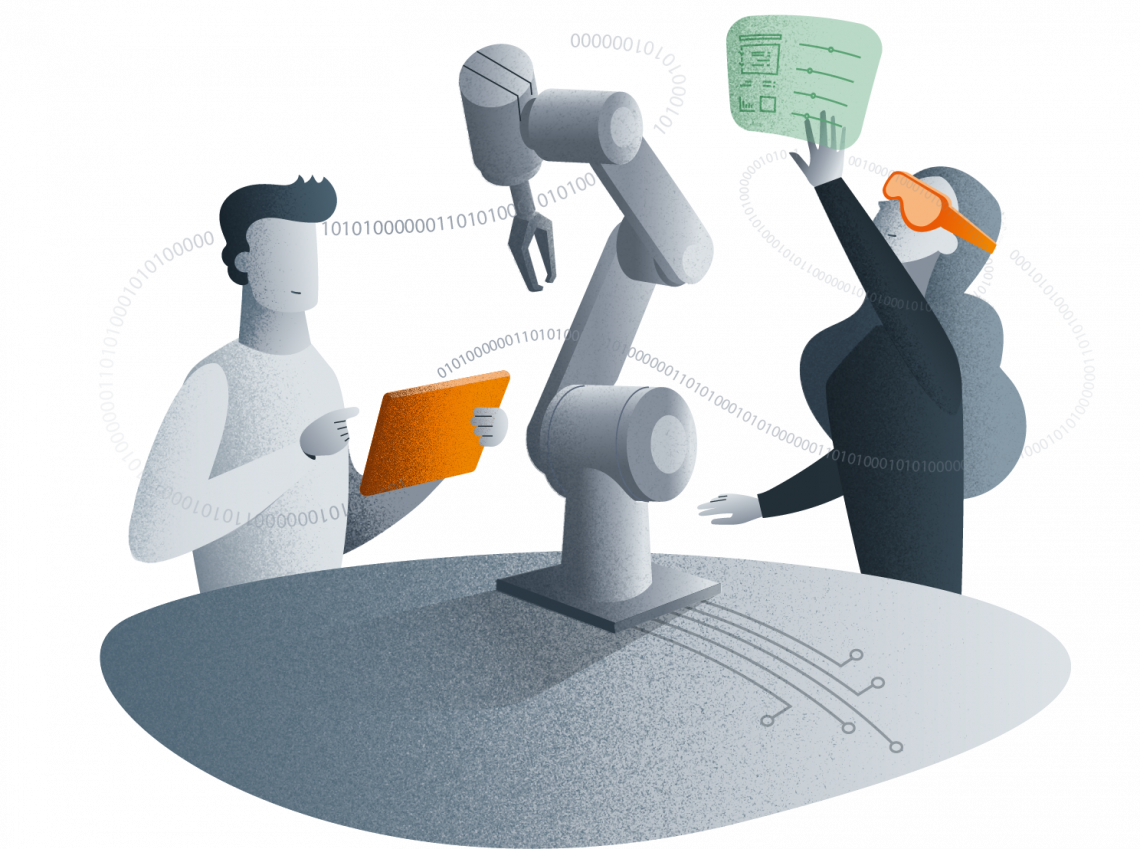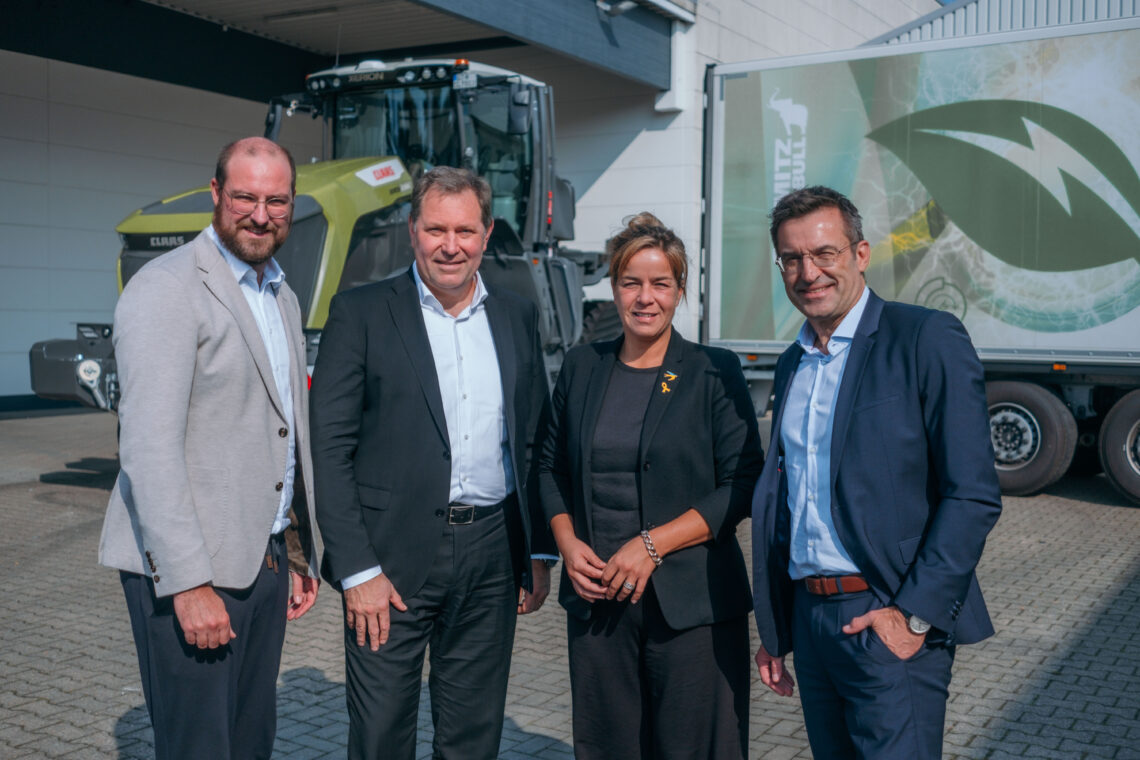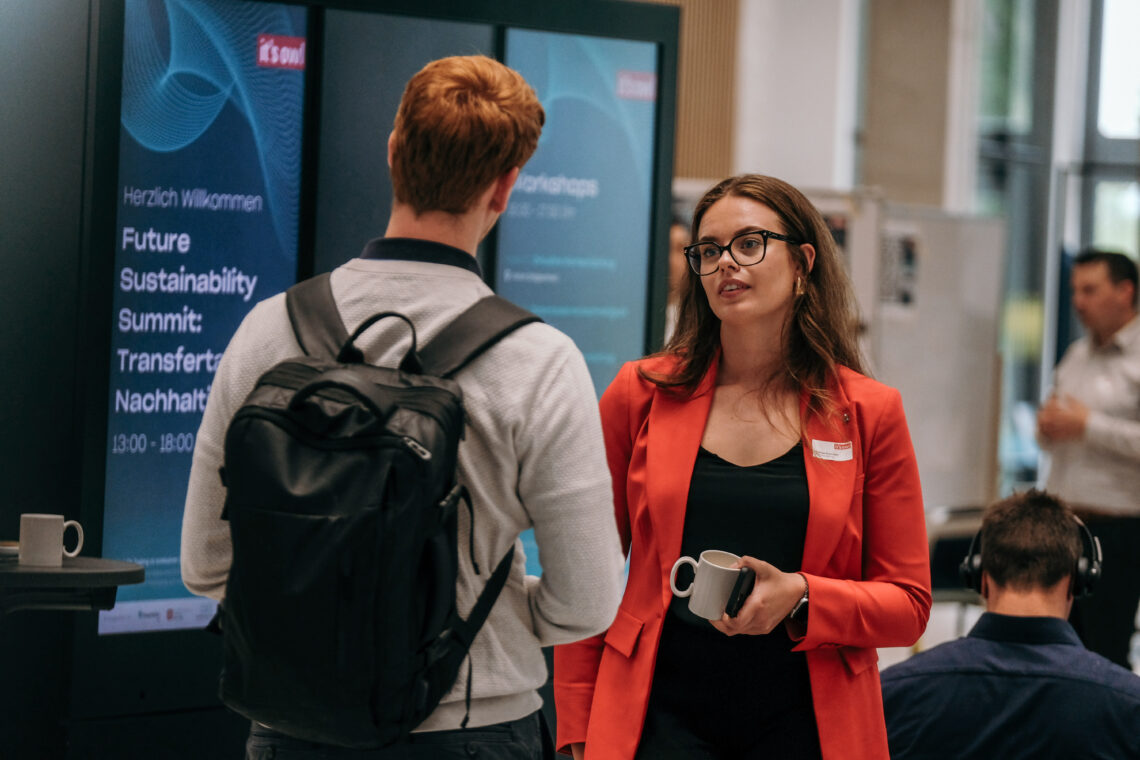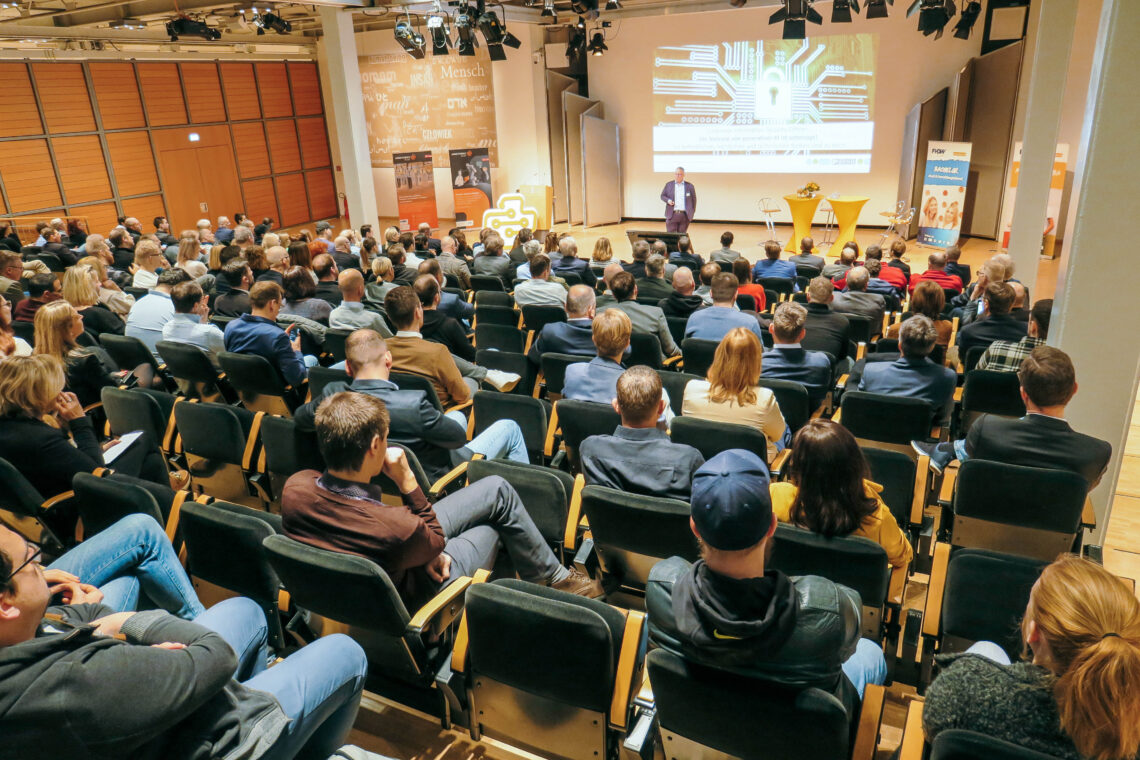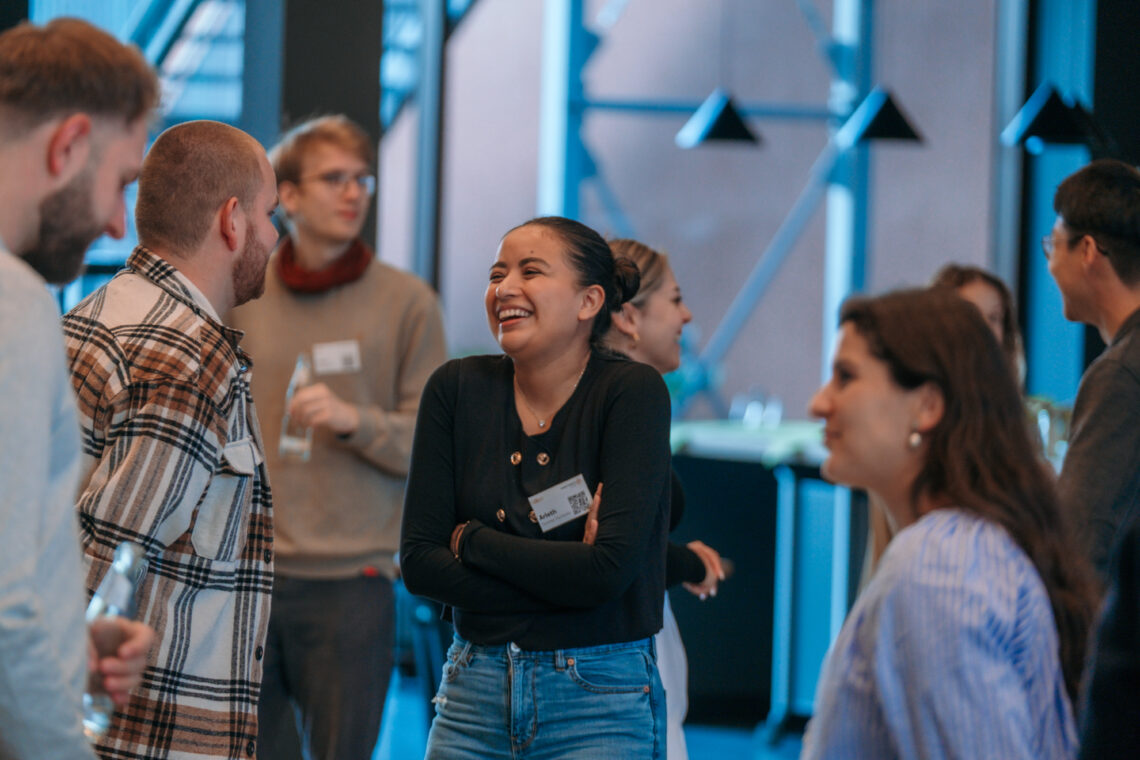
International Fall School: Why OWL attracts Canada’s AI talent
Canada is one of the world’s leading nations in AI research, while Germany is strong in industrial manufacturing. What is decided at government level in Ottawa and Berlin with funding programs and cooperation agreements can be seen in practice in OstWestfalenLippe: 24 students, doctoral candidates and young professionals from both countries visited research institutions and companies – including CLAAS, Dr. Oetker, GEA, Kannegiesser and Miele – as part of the International Fall School of it’s OWL and the Kompetenzzentrum Arbeitswelt.Plus. Their aim: to experience how German industry uses AI, automation and sustainability in practice.
Canadian PhD student Kimberly Tholl was amazed by the number of large companies and renowned universities in OstWestfalenLippe: “In this relatively small region, there is a high density of technology and close links between universities and industry. I learned an enormous amount in four days.”
It is precisely this density that makes the region so interesting for international guests. Within just a few days, the group visited CLAAS, Dr. Oetker, GEA, Kannegiesser and Miele and gained insights into productions that could hardly be more different and yet all offer points of contact for AI.
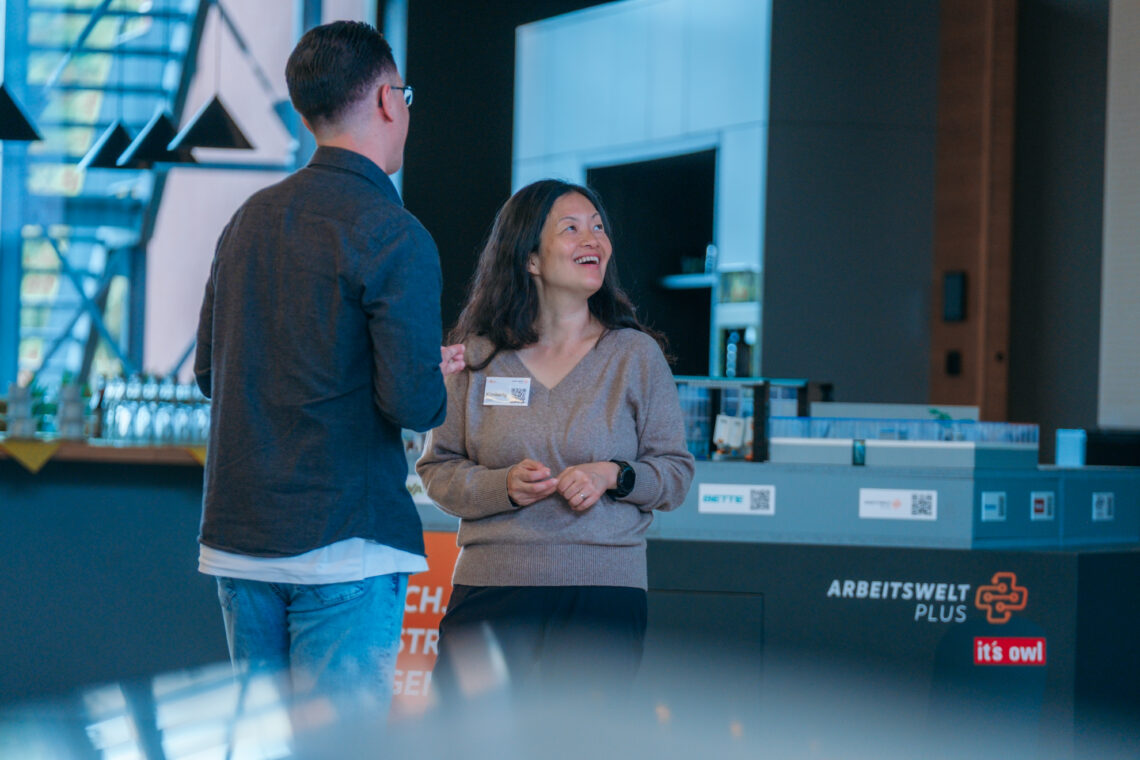
From vacuum cleaners to industrial laundries
For Bielefeld student Julius Langenberg, this range was an eye-opener: “The large-scale production facilities at Miele and Claas were impressive. At the same time, Kannegiesser and GEA showed what production for machines with many variants in small quantities looks like. What was particularly exciting was that there are a surprising number of potential applications for AI in industrial laundries.”
The focus on sustainability goals also stuck. “All of the companies clearly formulated how they want to reduce emissions and the use of resources – that was visible across the board,” says Langenberg. His conclusion: “I can well imagine working for all the companies in the medium to long term. The decisive factor is an environment in which I can develop as a junior.”
Was ist die International Fall School?
The International Fall School connects universities, companies and young talents from both countries. It builds on a long series of German-Canadian collaborations within the it’s OWL technology network and the Canadian network NGen – including research projects in the field of AI.
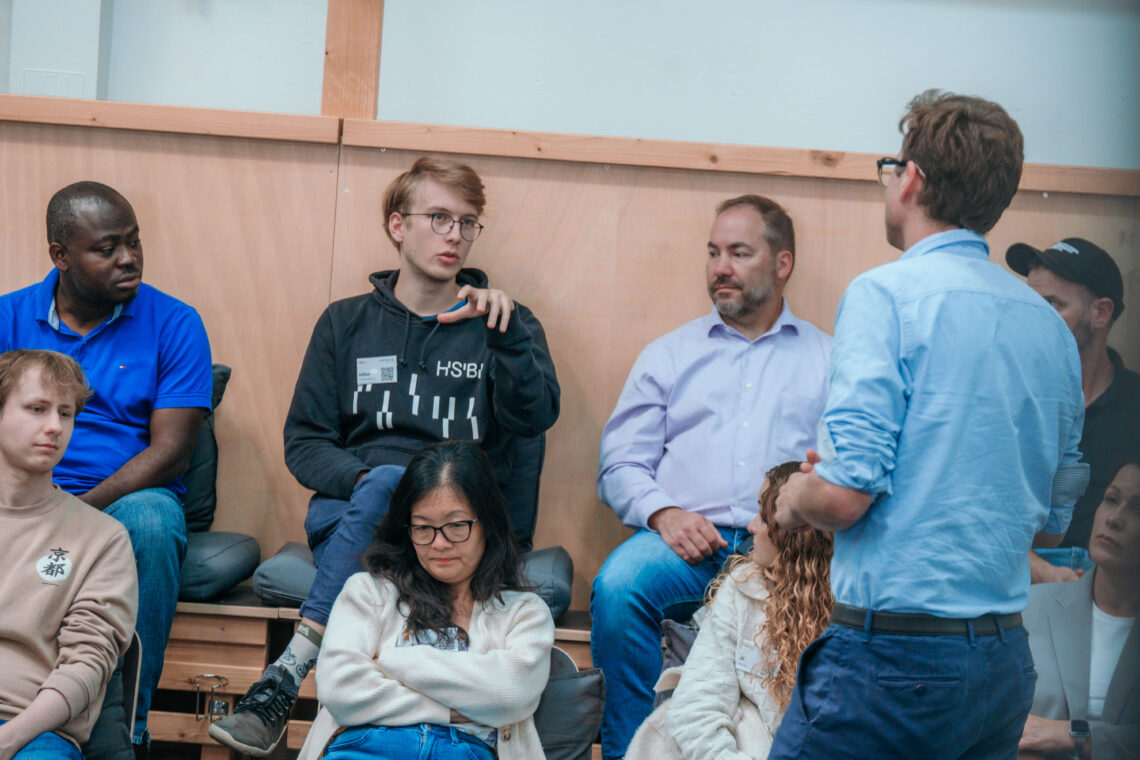
An “investment in the future” for companies
For the companies themselves, the Fall School was more than just an image program. “The International Fall School offers us a valuable platform for direct exchange with talented young professionals from all over the world, thereby broadening our perspectives. Especially in the context of AI and digital production, interdisciplinary dialogue is crucial for driving innovation forward. I also see it as an investment in the future for Miele and the region—because it not only generates new ideas, but also potential partnerships,” says Marc Sundermann, Project Manager Talent Acquisition at Miele.
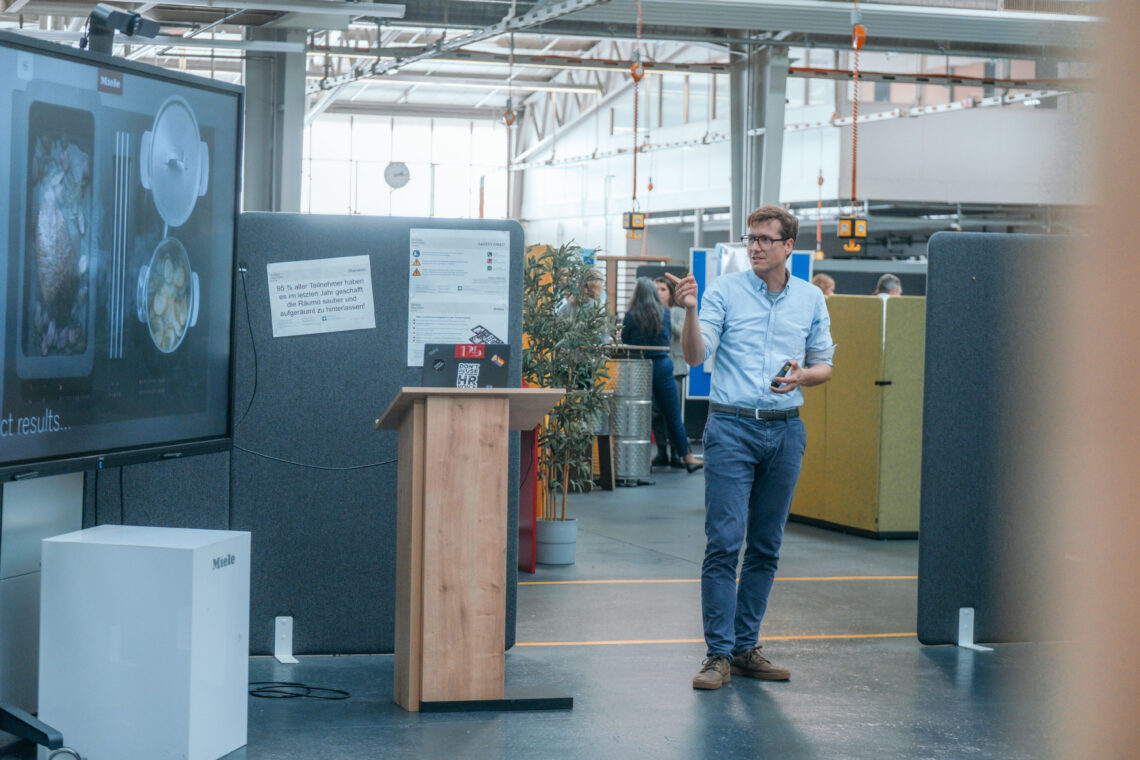
Cooperation to be strengthened
For Peter Wawrow, Director at the Canadian innovation network NGen, who helped plan the International Fall School on the Canadian side, it is precisely these encounters that make international cooperation tangible: “You don’t understand culture online. Anyone who sees a factory from the inside also understands what is important to German manufacturers in terms of quality and processes.” For Wawrow, cooperation in the region is a role model. “it’s OWL works closely with the companies – that’s how AI can be introduced in the company. That’s exactly why the collaboration works so well for us. He advocates a permanent exchange program that anchors research partnerships and internships in the long term.
It’s OWL is also interested in this. “The International Fall School shows that OWL is also interesting for international specialists. Visits can lead to new careers, projects and partnerships. In this way, an exchange program becomes a practical bridge between two innovation systems and plant visits become an outlook for future cooperation,” says Kerstin Eller, project manager at it’s OWL and the Arbeitswelt.Plus competence center.
Impressions of the Fall School

